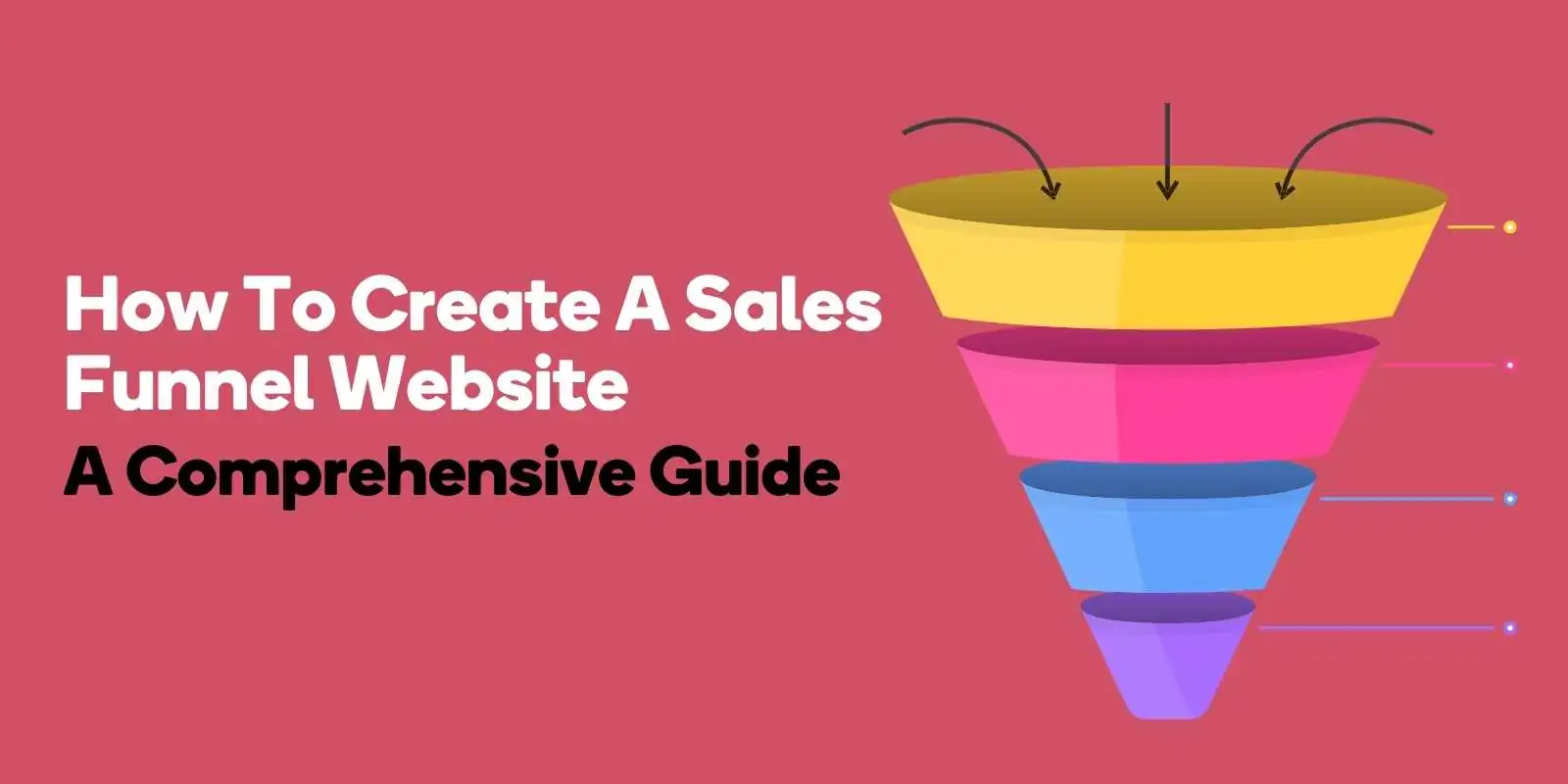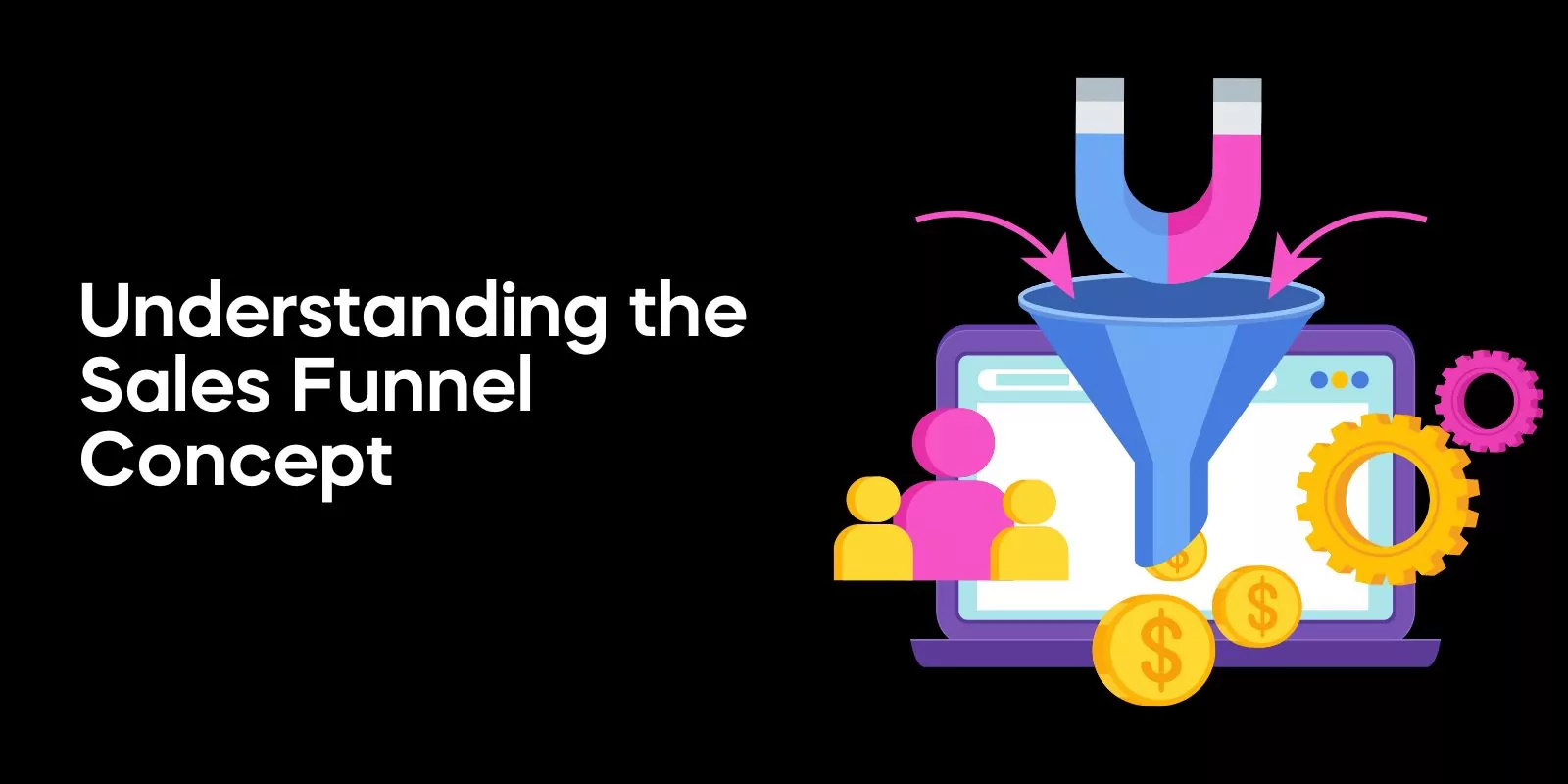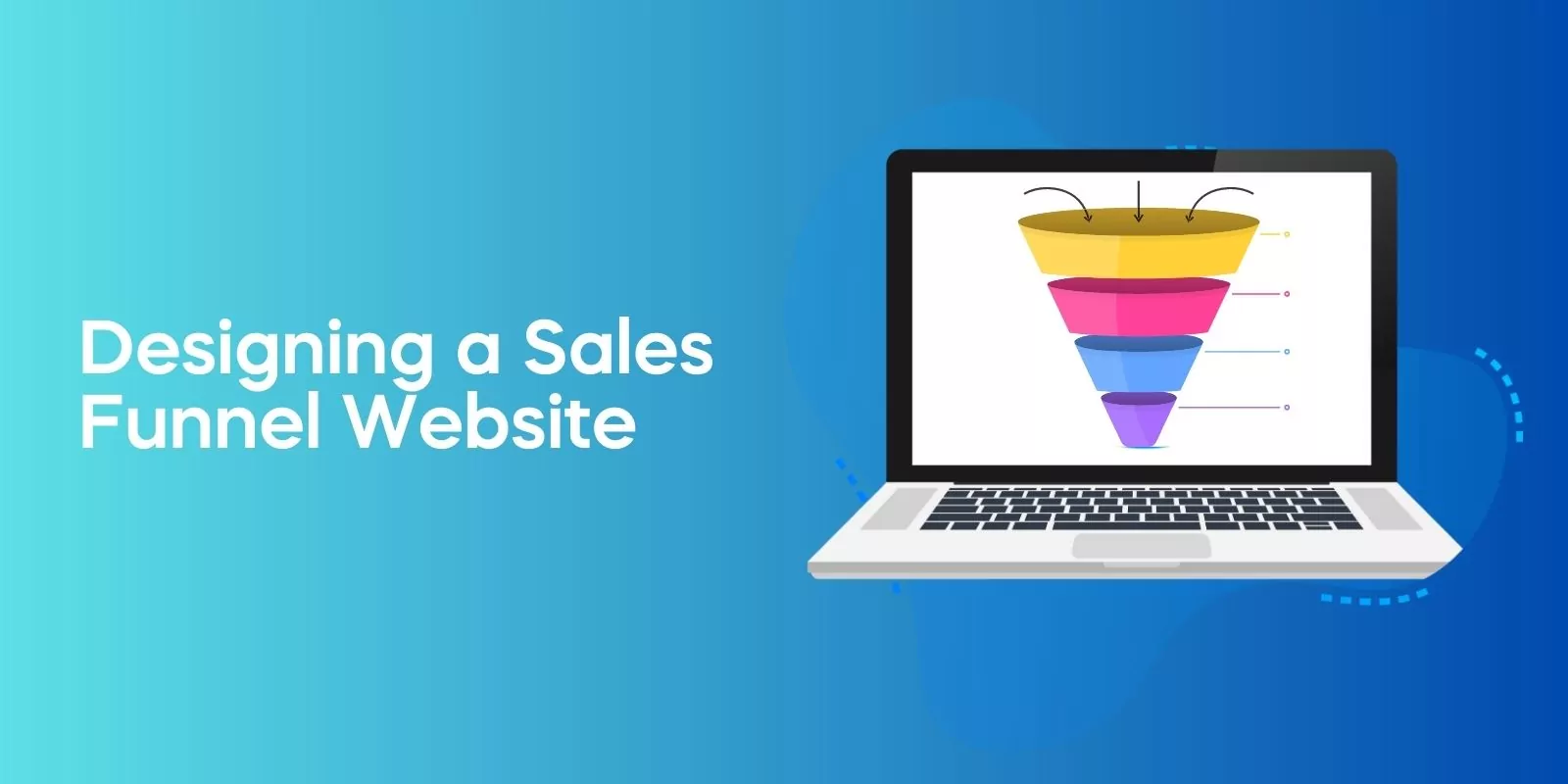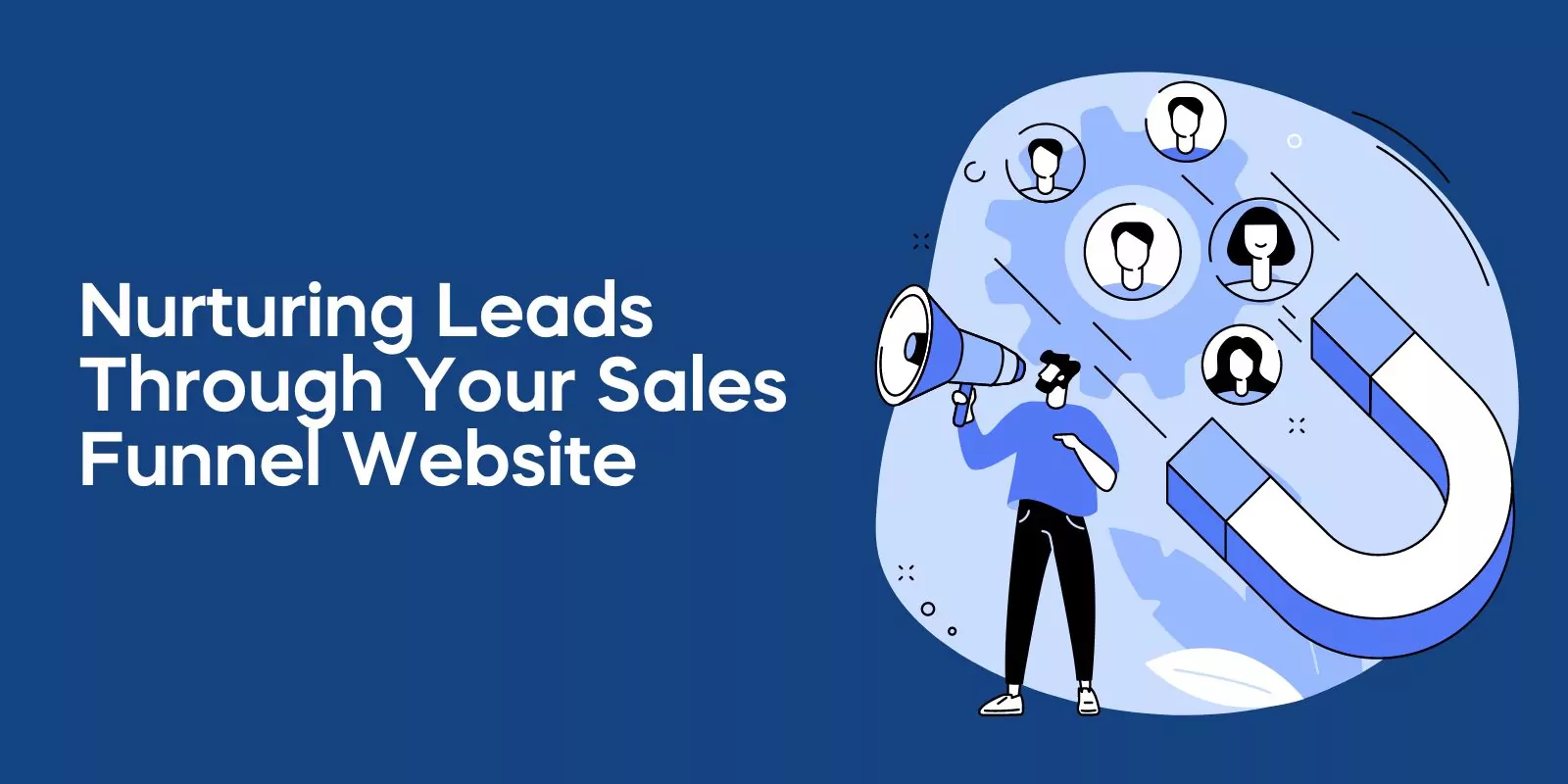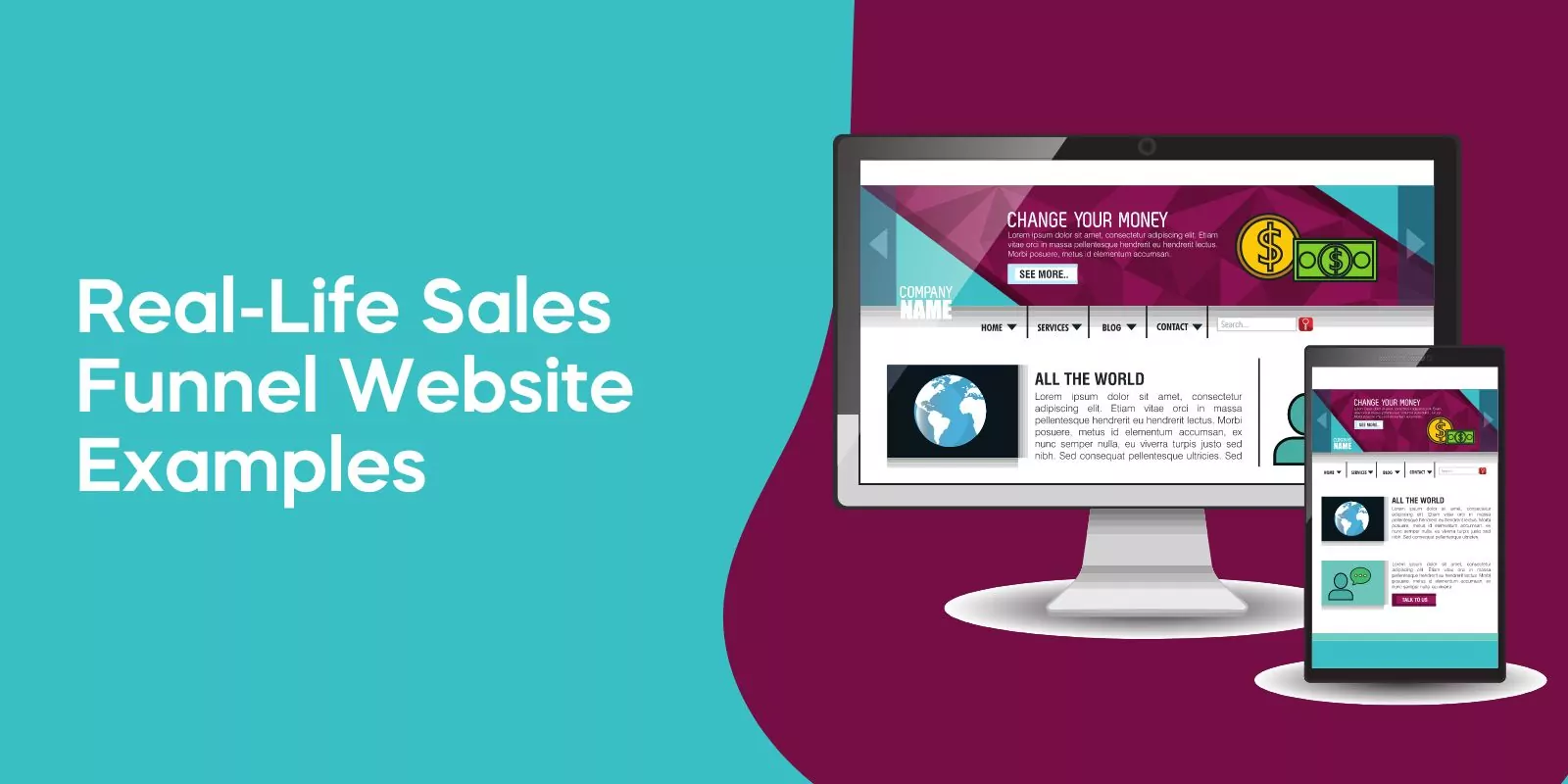In this comprehensive guide, I’ll dive deep into the world of sales funnel websites, sharing expert tips, proven strategies, and real-life examples to help you create a high-converting online presence.
Get ready to take a journey through the intricacies of the sales funnel concept, its stages, and its application to website design.
I’ll also discuss best practices for nurturing leads, tracking performance, and optimizing your sales funnel website for maximum results.
Let’s get started!
Understanding the Sales Funnel Concept
Imagine the sales funnel as a magical tool that turns prospects into paying customers.
It’s a visual representation of the sales funnel stages that your target audience goes through, from awareness to conversion, in the buying process.
To create a sales funnel, you need to align your sales and marketing efforts with the customer journey, making it easier for your sales team to close deals and grow your business during the sales cycle.
By understanding the importance of sales funnels and managing your sales pipeline effectively, you can optimize each stage for maximum results.
But what makes a sales funnel important?
A successful sales funnel helps you identify and engage with potential customers, guiding them through the sales process with relevant messaging and offerings.
This not only increases the chances of turning prospects into customers, but also helps you retain existing customers, turning them into loyal advocates for your brand.
Understanding why a sales funnel is important is crucial to your business success.
The AIDA Model
The AIDA model is an incredibly powerful framework that can help you understand and optimize the four stages of the sales funnel: Awareness, Interest, Desire, and Action.
This model can greatly improve your sales and marketing efforts by providing insights into each stage and how it relates to the customer journey on your website.
In the Awareness stage, your goal is to capture the attention of potential customers and make them aware of your product or service.
This can be achieved through advertising, social media, word-of-mouth, or even a simple Google search.
Once your prospects are aware of your brand, they transition to the Interest stage, where you need to engage them with relevant content and offers, ensuring they move further down the sales funnel.
The Desire stage is where you make your prospects want your product or service by presenting exciting offers and demonstrating the value of your offering.
For example, you could offer free shipping, discount codes, or even free gifts to capture their attention.
Finally, the third sales funnel stage, known as the Action stage, is where you seal the deal by providing a product demonstration, offering a free trial, or giving a special discount code.
This is the point where your prospects turn into paying customers.
Marketing Funnel vs. Sales Funnel
While the terms “marketing funnel” and “sales funnel” are often used interchangeably, they represent distinct yet interconnected processes.
The marketing funnel focuses on creating awareness and interest in your brand, taking prospects from their initial interaction to the point where they’re keen to learn more about what you have to offer.
On the other hand, the sales funnel begins at the end of the marketing funnel, guiding potential customers from interest to conversion.
By understanding the unique roles of both funnels and leveraging their interconnectedness, you can create a seamless customer journey that drives conversions and boosts your business growth.
For example, a marketing automation funnel can provide consistent and friendly emails and contacts at all stages of the sales funnel, helping you get the most out of your sales funnel management efforts while guiding prospects through the sales process.
Designing a Sales Funnel Website
Now that you have a solid understanding of the sales funnel concept, it’s time to put that knowledge to work by designing an effective sales funnel website.
A well-crafted website aligns with your target audience’s needs and preferences, guiding them through the sales process and increasing your chances of turning prospects into customers.
In this section, I’ll provide a step-by-step guide on designing a sales funnel website that not only attracts prospects but also keeps them engaged and motivated to take action.
I’ll cover essential aspects such as optimizing for user experience, creating compelling landing pages, and utilizing lead capture forms to gather prospect information and build your email list.
So let’s dive into the world of sales funnel website design and discover the secrets to creating an online presence that converts!
Optimize for User Experience
A great user experience is crucial for the success of your sales funnel website.
By optimizing your website design, you can boost user engagement, drive up conversions, and create an exceptional user experience that keeps visitors coming back for more.
To optimize your website for user experience, consider making your site navigation more efficient by utilizing sticky headers, creating clear and understandable links, and including a concise tagline.
Additionally, improving loading speed and boosting performance is essential for keeping your website visitors happy.
You can achieve this by optimizing images, minifying code, and leveraging caching.
Finally, don’t forget to enhance mobile responsiveness, as more and more users are accessing websites through their mobile devices.
Create Compelling Landing Pages
Landing pages are a crucial component of a successful sales funnel website.
They serve as the gateway to your business, giving prospects an insight into your products or services and helping them make an informed decision.
To create high-converting landing pages, focus on crafting strong headlines, persuasive copy, and clear calls-to-action (CTAs) that compel your website visitors to take the desired action.
One effective strategy for creating compelling landing pages is to directly address your target audience and keep your message simple and straightforward.
This not only helps you resonate with your potential customers, but also ensures that they understand the value of your product or service.
Additionally, using specific anecdotes from successful customers can encourage more sales further down the funnel by providing social proof and giving prospects a glimpse of what they can achieve with your offering.
Don’t forget to capitalize on exit intent offers, which can help you capture site visitors’ attention when they’re about to leave your landing page.
This can include popups, overlays, or other extras that encourage users to sign up or make a purchase before exiting your website.
By implementing these strategies, you can create landing pages that not only attract prospects but also convert them into customers.
Utilize Lead Capture Forms
Lead capture forms are an essential component of a successful sales funnel website.
They enable you to collect valuable information from your visitors, such as their name, email address, and other contact details.
This information can be used to build an email list of prospects and customers, which can be leveraged for marketing and sales purposes, ultimately helping your business grow and succeed.
To maximize your lead capture form’s effectiveness, keep it simple and easy to fill out, and offer something of value in exchange for the user’s contact information.
Additionally, optimizing the form’s design and layout, using compelling copy, relevant images, and smart placement, and ensuring that the form is mobile-friendly are all key components for successful lead capture forms.
By implementing these best practices, you can effectively gather prospect information, build your email list, and nurture leads through your sales funnel website.
Nurturing Leads Through Your Sales Funnel Website
As you guide your prospects through the sales funnel, it’s essential to nurture them with relevant content and engagement tactics.
This not only keeps them interested in your offerings, but also helps you build trust and rapport, ultimately increasing the likelihood of turning prospects into customers.
In this section, I’ll discuss strategies for nurturing leads through various stages of the sales funnel using website content, personalization, segmentation, and email marketing automation.
By implementing these strategies, you can effectively guide your prospects through the customer journey and maximize your chances of converting them into loyal customers.
So let’s explore the world of lead nurturing and discover the secrets to keeping your prospects engaged and motivated to take action!
Content Marketing Strategy
Content marketing plays a crucial role in guiding prospects through the sales funnel by providing valuable and relevant information that addresses their needs and concerns.
This not only helps you build trust with your target audience, but also positions you as an authority in your industry, making it more likely that prospects will choose your product or service over your competitors’.
To create a successful content marketing strategy, focus on defining goals, understanding your audience, researching competitors, and developing a content production schedule.
Additionally, use your customer’s voice in your content, leverage data to understand your audience, and focus on values that will inspire them.
By implementing these best practices, you can effectively engage your prospects and guide them through the various stages of the sales funnel.
Personalization and Segmentation
Personalization and segmentation are powerful marketing strategies that enable you to target specific audiences with tailored content.
Personalization involves customizing content to the individual user, while segmentation involves dividing users into groups based on certain criteria.
Both of these strategies can help you maximize the impact of your marketing initiatives and drive conversions.
By combining segmentation and personalization, you can target emails based on buyer personas or website behavior, define an ideal customer profile, choose segmentation criteria, use dynamic images and pricing, CTAs, and targeted onsite coupons and incentives.
Personalizing web content and tailoring pitches to address customer needs and challenges can also help you maximize the effectiveness of your brand’s marketing strategy.

Award-Winning
Sales Funnel & Website Expert
Ready for Revenue – Not Just “Traffic”?
- Websites that Work: Clean, fast, built to convert – no design fluff.
- Funnels that Sell for You: Step-by-step paths that turn clicks into paying customers.
- SEO That Hunts Buyers: Show up exactly when prospects reach for their wallets.
Email Marketing Automation
Integrating email marketing automation into your sales funnel website is a powerful way to nurture leads and drive conversions.
By automating the process of sending targeted and personalized emails to your prospects and customers, you can ensure that they receive the right message at the right time, ultimately increasing the chances of converting them into customers.
Email marketing plays an essential role in the customer journey, with a significant impact on the pre-purchase, purchase, and post-purchase stages.
By setting up behavior-based triggers, personalizing email content, and segmenting your email list, you can maximize the impact of your email marketing automation and guide your prospects through the sales funnel with ease.
Tracking and Analyzing Sales Funnel Performance
To ensure the success of your sales funnel website, it’s crucial to track and analyze its performance.
This not only allows you to identify areas for improvement, but also helps you optimize results, ensuring that your website is effectively guiding prospects through the customer journey and converting them into customers.
In this section, I’ll discuss the importance of tracking and analyzing sales funnel performance, including key performance indicators (KPIs), A/B testing, and leveraging analytics tools.
By implementing these strategies, you can continuously improve your sales funnel website and maximize its effectiveness in driving conversions and business growth.
So let’s dive into the world of performance tracking and analysis and discover the secrets to optimizing your sales funnel website for maximum results!
Key Performance Indicators (KPIs)
Key Performance Indicators (KPIs) are essential metrics that help you track progress towards your organizational goals and objectives, as well as assess the success of your sales funnel website.
By measuring the right KPIs, you can gain valuable insights into the performance of your website and identify areas for improvement.
Some of the most important KPIs for tracking and analyzing sales funnel performance include conversion rate, customer acquisition cost, customer lifetime value, and sales growth rate.
Additionally, other key metrics to consider are customer retention rate, customer satisfaction score, and win rate.
By monitoring these KPIs, you can gain crucial insights into the success of your sales funnel and make data-driven decisions to optimize your website for maximum results.
Remember, tracking and measuring KPIs is an ongoing process.
Continuously monitoring these metrics will help you identify trends and patterns, allowing you to make informed decisions and optimize your sales funnel website for long-term success.
A/B Testing and Optimization
A/B testing is a powerful technique that allows you to optimize various elements of your sales funnel website by comparing two different versions and determining which one performs better.
This can include headlines, CTAs, design elements, and more.
By experimenting with different versions of these elements, you can gain valuable insights into which version will generate the best results and ultimately drive more conversions.
To maximize the success of your A/B testing efforts, it’s essential to follow best practices such as testing one variable at a time, focusing on measurable hypotheses, using an ideal audience for the test, and ensuring your data is statistically significant.
Additionally, testing early and often, being patient with multivariate tests, and keeping an open mind are all crucial for getting the most out of your A/B testing and optimization efforts.
Leveraging Analytics Tools
Analytics tools, such as Google Analytics and Hotjar, can provide invaluable insights into user behavior and website performance.
These tools can help you track visits, monitor user funnels, and gain a deeper understanding of how your prospects are interacting with your website.
By leveraging analytics tools, you can identify areas for improvement and optimize your sales funnel for maximum success.
Remember, tracking and analyzing your sales funnel website is an ongoing process that requires constant refinement and adjustment.
By staying committed to monitoring performance, leveraging analytics tools, and making data-driven decisions, you can ensure that your sales funnel website continues to drive conversions and propel your business towards success.
Real-Life Sales Funnel Website Examples
Sometimes, the best way to understand how to create a successful sales funnel website is to look at real-life examples from various industries.
By examining these examples, you can gain valuable insights into the strategies and best practices that have helped these companies achieve success with their sales funnel websites.
In this section, I’ll showcase three successful sales funnel websites from different industries, including an e-commerce store, a SaaS company, and an online course provider.
I’ll highlight their effective strategies and best practices, providing you with inspiration and ideas for your own sales funnel website.
So let’s take a closer look at these real-life sales funnel website examples and discover the secrets to their success!
Example 1: E-commerce Store
An e-commerce store’s sales funnel website should focus on product pages, cart abandonment strategies, and upselling techniques.
Take, for example, a successful online store that has optimized its product offer page for maximum impact. They’ve designed an attractive and easy-to-navigate website that showcases their products effectively, encouraging visitors to explore and ultimately make a purchase.
This e-commerce store also utilizes cart abandonment strategies, such as exit intent offers and follow-up emails, to re-engage potential customers who may have left the site without completing a purchase.
Additionally, they use upselling techniques to offer related products and accessories, increasing the average order value and maximizing revenue.
By implementing these strategies and best practices, this e-commerce store has created a high-converting sales funnel website that drives conversions and boosts business growth.
By taking inspiration from this example, you can optimize your own e-commerce store’s sales funnel website and maximize its effectiveness in turning website visitors into loyal customers.
Example 2: SaaS Company
A SaaS company’s sales funnel website should focus on lead magnets, free trials, and customer testimonials.
Consider a successful SaaS company that offers a free trial of their software to attract prospects and demonstrate the value of their product.
They also use lead magnets, such as ebooks and webinars, to capture contact information and build their email list.
To nurture leads through their sales funnel, this SaaS company leverages personalized content and targeted emails based on user behavior and preferences.
Sales teams also showcase customer testimonials and case studies to provide social proof and demonstrate the effectiveness of their software solution.
By adopting these strategies and best practices, this SaaS company has created a high-converting sales funnel website that effectively guides prospects through the customer journey and turns them into loyal customers.
By drawing inspiration from this example, you can optimize your own SaaS company’s sales funnel website and maximize its potential for driving conversions and business growth.
Example 3: Online Course Provider
An online course provider’s sales funnel website should feature course previews, pricing tiers, and social proof.
A successful online course provider utilizes course previews to give potential customers a glimpse into the content and quality of their courses.
They also offer flexible pricing tiers catering to different budgets and needs, and showcase social proof in the form of student testimonials and success stories.
By offering valuable content and resources, such as blog posts, webinars, and free trials, this online course provider nurtures leads through their sales funnel, building trust and rapport with their target audience.
They also use email marketing to keep prospects engaged and informed about new course offerings and promotions.
By implementing these strategies and best practices, this online course provider has created a high-converting sales funnel website that effectively guides prospects from awareness to conversion, turning casual website visitors into loyal customers.
By taking inspiration from this example, you can optimize your own online course provider’s sales funnel website and maximize its potential for driving conversions and business growth.
Frequently Asked Questions
What is a sales funnel website?
A sales funnel website helps businesses understand and guide their customers through the buying process. It collects data on user behavior, allowing businesses to identify where customers are in the buying journey and target specific offers that will encourage them to purchase.
The aim of a sales funnel website is to effectively and efficiently move prospects through the sales process.
How do I create a sales funnel for my website?
Creating a successful sales funnel for your website is easy when you follow the 5-step process of defining your customer problem, setting goals, offering a preliminary offer, qualifying leads, nurturing them and closing the deal.
Then track the results and optimize to get the best performance from your website’s sales funnel.
What is the difference between ClickFunnels and sales funnel?
ClickFunnels is a tool that helps businesses create effective sales funnels with an optimized customer journey. While ClickFunnels can help build the funnel, a sales funnel is the process of taking prospective customers through an automated series of steps which are designed to lead them towards a purchase.
In summary, ClickFunnels is a tool for creating sales funnels, while a sales funnel is the actual process of turning prospects into paying customers.
What is a sales funnel example?
A great example of a sales funnel is when a customer browses a store for discounted products. They select the item they would like to purchase and then proceed to the checkout.
By following these steps, the customer has completed the sales funnel.
What are the 4 stages of the sales funnel?
The four stages of the sales funnel are awareness, consideration, conversion, and loyalty. Each stage serves an important purpose in helping customers make a purchase decision.
Brands should tailor their content to match the customer’s needs at each stage to ensure they have a successful journey through the funnel.
Conclusion
By understanding the sales funnel concept and its stages, optimizing your website design for user experience, and nurturing leads through content marketing, personalization, and email marketing automation, you can effectively guide your prospects through the customer journey and turn them into loyal customers.
Remember, tracking and analyzing your sales funnel website’s performance is crucial for continuous improvement and long-term success.
By leveraging analytics tools, monitoring KPIs, and implementing A/B testing and optimization strategies, you can ensure that your sales funnel website remains effective in driving conversions and propelling your business towards growth and success.
So don’t wait any longer – start optimizing your sales funnel website today and watch your online business soar!
